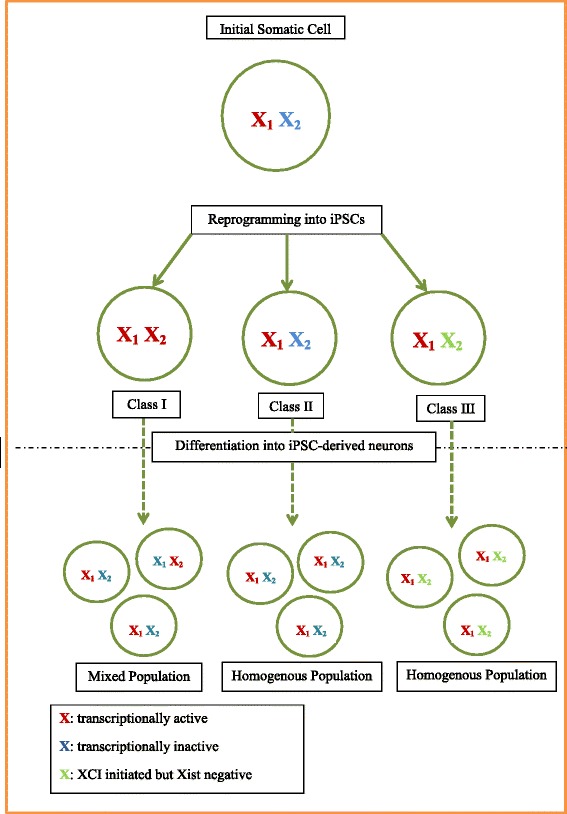Fig. 1.

Reprogramming schematic. After reprogramming, there exist three possible combinations of X chromosome populations. In class I, both X chromosomes undergo reactivation and are transcriptionally active. Upon reprogramming, one of the X chromosomes randomly inactivates yielding a mixed population of inactivated X chromosomes. In class II, the reprogrammed population never undergoes XCR and carries over the XCI status of the original somatic cell, which is maintained through differentiation. The third outcome, class III, represents an in-between state in which the initially inactivated X chromosome loses Xist as well as H3K27me3 expression during reprogramming yet is not completely transcriptionally active. In this class, differentiation does not yield a fully inactivated X chromosome [29]. Class III is similar to erosion that occurs during extensive culturing in which an inactivated X chromosome loses Xist and H3K27me3 expression but is unable to re-inactivate upon differentiation [32]
